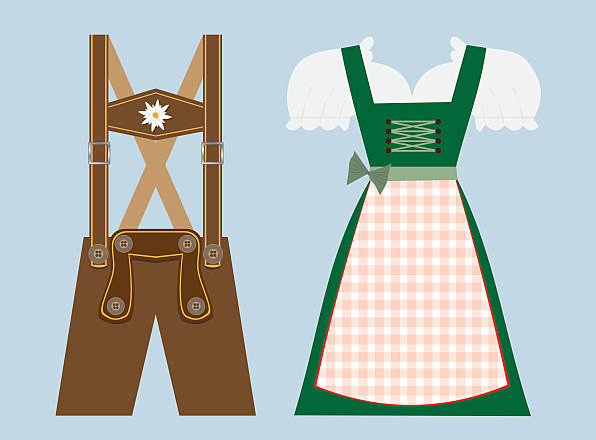The Bolivia National Dress is rich in cultural heritage, with each region boasting its distinctive style. Among the myriad of traditional costumes, the pollera stands out as an iconic symbol of Bolivian culture. This article delves into the fascinating world of the pollera, uncovering its historical and cultural significance, intricate designs, regional variations, and its evolving role in modern times.
The pollera, a traditional dress worn primarily by indigenous women in Bolivia, is a testament to the country’s rich cultural diversity and heritage. Its roots can be traced back to the Spanish colonial era, where it evolved from the blending of indigenous and European influences. The pollera is characterized by its voluminous, floor-length skirt, intricately embroidered designs, and vibrant colors.
Historical Significance of Bolivia National Dress
The pollera carries a deep historical significance that reflects Bolivia’s complex past. During the colonial period, indigenous women were compelled to adopt Spanish clothing styles, including the use of skirts. However, instead of abandoning their cultural identity, these women embraced the pollera as a form of resistance and cultural preservation. The pollera became a symbol of indigenous pride and resilience.
Cultural Significance of Bolivia National Dress
Traditional Clothing of Indigenous Women
For indigenous women, the pollera is more than just a piece of clothing. It represents their connection to their ancestral roots, their cultural heritage, and their community. The intricate embroidery patterns found on the pollera often depict traditional symbols and motifs that hold deep spiritual and cultural meanings.
Symbolism and Identity
Wearing a pollera is a way for Bolivian women to proudly display their cultural identity. It is a visual representation of their belonging to a specific community or region. The pollera is also worn during important life events, such as weddings and festivals, further emphasizing its role as a symbol of cultural pride and identity.
Preservation of Cultural Heritage
In a rapidly changing world, the pollera plays a vital role in preserving Bolivia’s cultural heritage. By wearing and passing down this traditional dress to future generations, Bolivians ensure the continuity and celebration of their rich cultural traditions.
Types of Pollera
The pollera comes in various forms, each with its distinct characteristics and regional associations. Here are the three main types of pollera:
Traditional Pollera
The traditional pollera embodies the essence of Bolivian heritage. It features a full, voluminous skirt, often made from layers of petticoats, and is typically accompanied by a ruffled underskirt, known as an enagua.
Mestizo Pollera
The mestizo pollera represents the fusion of indigenous and Spanish influences. It incorporates elements from both cultures, creating a unique blend. The skirt is usually less voluminous than the traditional pollera, and the embroidery patterns may showcase a combination of indigenous and European motifs.
Contemporary Adaptations
In modern times, the pollera has undergone adaptations to suit evolving fashion trends and personal preferences. Contemporary polleras may feature different lengths, varying embroidery styles, and even incorporate modern fabrics. These adaptations allow for greater versatility and individual expression while still honoring the essence of the traditional dress.
Design and Embroidery Patterns
The pollera’s beauty lies in its intricate embroidery patterns. Skilled artisans meticulously create these designs, often using vibrant threads and delicate stitches. The motifs vary from region to region, but common elements include flowers, geometric shapes, animals, and cultural symbols. Each stitch tells a story and adds depth to the overall aesthetic appeal of the pollera.
Materials Used in Pollera
Traditionally, the pollera is made using natural fibers such as wool, cotton, and silk. However, with modernization, synthetic fabrics have also become popular choices due to their durability and affordability. Regardless of the materials used, the craftsmanship and attention to detail remain paramount in creating an authentic and visually striking pollera.
Regional Variations of Bolivia National Dress
The pollera exhibits regional variations throughout Bolivia, with each area having its unique style and characteristics. Here are a few notable regional variations:
La Paz
In La Paz, the pollera is known for its vibrant colors and intricate embroidery. The skirts are often adorned with floral patterns and reflective elements that catch the light, creating a dazzling effect during traditional dances and festivals.
Cochabamba
Cochabamba is renowned for its delicate and refined polleras. The embroidery in this region is characterized by intricate stitches and precise detailing. Pastel colors are often favored, reflecting a softer and more elegant aesthetic.
Sucre
The polleras of Sucre are celebrated for their bold and vibrant embroidery. The motifs often include geometric patterns and floral designs, combining traditional and contemporary elements.
Potosí
Potosí’s polleras are distinguished by their use of metallic threads, creating a shimmering effect. Silver and gold embroidery are commonly seen, paying homage to the region’s rich mining history.
Occasions and Festivals Associated with Bolivia National Dress
The pollera takes center stage during various cultural celebrations and festivals in Bolivia. Here are two significant events where the pollera plays a prominent role:
Fiesta de la Virgen de la Candelaria
This festival, held in February in the city of Copacabana, showcases the pollera in all its glory. Participants wear intricately embroidered polleras as they dance and parade through the streets, paying homage to the Virgin of Candelaria.
Carnaval de Oruro
Carnaval de Oruro is one of Bolivia’s most famous and colorful carnivals. The pollera is an integral part of the traditional attire worn by dancers participating in the Diablada, a dance that combines indigenous and Spanish influences. The vibrant polleras add a captivating visual element to the festivities.
Evolution of Pollera in Modern Times
As Bolivia embraces modernization and globalization, the pollera has evolved to adapt to changing times. While the traditional pollera remains highly revered, contemporary adaptations have emerged, blending traditional elements with modern fashion trends. This evolution ensures that the pollera continues to be relevant and cherished by younger generations.
Influences and Inspirations
The pollera draws inspiration from various sources, including indigenous traditions, Spanish colonial fashion, and even contemporary global trends. The dress serves as a symbol of cultural fusion and represents Bolivia’s multicultural heritage.
Challenges and Preservation Efforts
Preserving the artistry and cultural significance of the pollera faces several challenges. Economic factors, changing fashion trends, and the passing of traditional embroidery techniques from one generation to the next all pose threats to its continued existence. However, dedicated artisans, cultural organizations, and passionate individuals are actively working to safeguard the pollera’s legacy through education, awareness, and support.
Popularization of Bolivia National Dress
In recent years, the pollera has gained popularity beyond Bolivia’s borders. Its exquisite beauty and cultural significance have captured the attention of fashion designers, photographers, and enthusiasts worldwide. Through fashion shows, exhibitions, and social media, the pollera continues to captivate audiences globally, elevating its status as an iconic national dress.
FAQ
1. Is the pollera only worn by women in Bolivia?
Yes, the pollera is primarily worn by women in Bolivia. It is an integral part of their cultural identity and heritage.
2. Can non-Bolivians wear a pollera?
While the pollera holds deep cultural significance for Bolivians, it is also appreciated and worn by people from different cultures as a way to celebrate and honor Bolivian traditions.
3. How long does it take to create a traditional pollera?
The time required to create a traditional pollera varies depending on its complexity and the skill level of the artisans. It can take several months to complete a finely embroidered pollera.
4. Are there any restrictions or guidelines regarding the wearing of a pollera?
There are no specific restrictions, but it is important to wear the pollera respectfully and honor its cultural significance. It is recommended to seek guidance and understanding of local customs when wearing a pollera in Bolivia.
5. Where can one purchase an authentic pollera?
Authentic polleras can be found in specialized markets, artisan shops, and during cultural festivals in Bolivia. It is advisable to support local artisans and seek out certified products to ensure authenticity.
Conclusion
The pollera stands as an exquisite testament to Bolivia’s rich cultural heritage. Its vibrant colors, intricate embroidery, and regional variations make it a captivating symbol of identity and pride. As Bolivia navigates the challenges of a changing world, efforts to preserve and celebrate the pollera’s legacy are crucial. By embracing its historical significance, encouraging craftsmanship, and nurturing cultural traditions, the pollera continues to thrive as a cherished national dress, captivating hearts and minds worldwide.
References
- “Bolivia National Dress: The Pollera.” BoliviaBella. Accessed May 18, 2023. https://www.boliviabella.com/bolivia-national-dress.html
- “The Symbolism of the Pollera in Bolivian Culture.” Bolivian Life. Accessed May 18, 2023. https://www.bolivianlife.com/the-symbolism-of-the-pollera-in-bolivian-culture/
- “The Pollera: Traditional Dress of Bolivia.” Culture Trip. Accessed May 18, 2023. https://theculturetrip.com/south-america/bolivia/articles/the-pollera-traditional-dress-of-bolivia/

